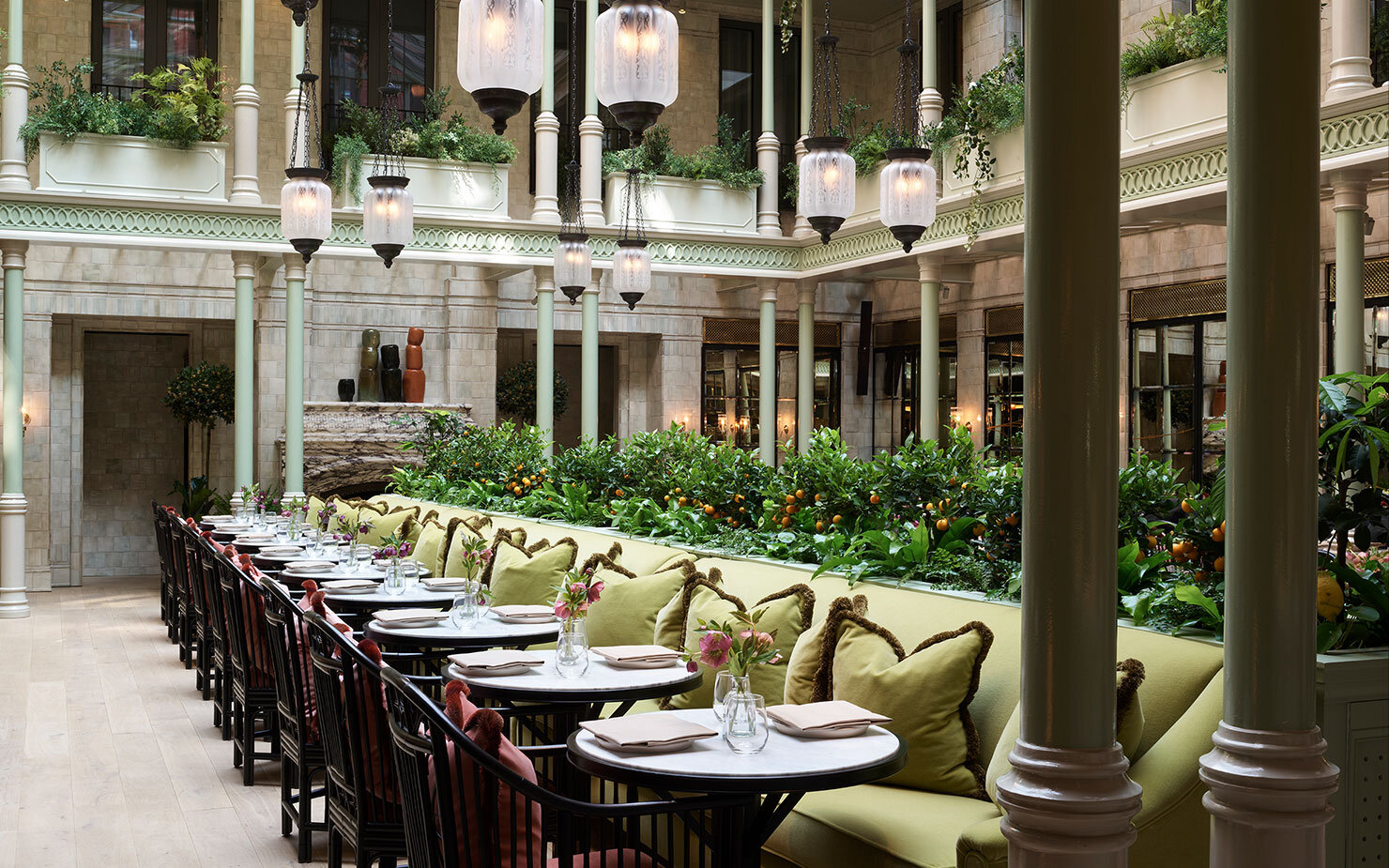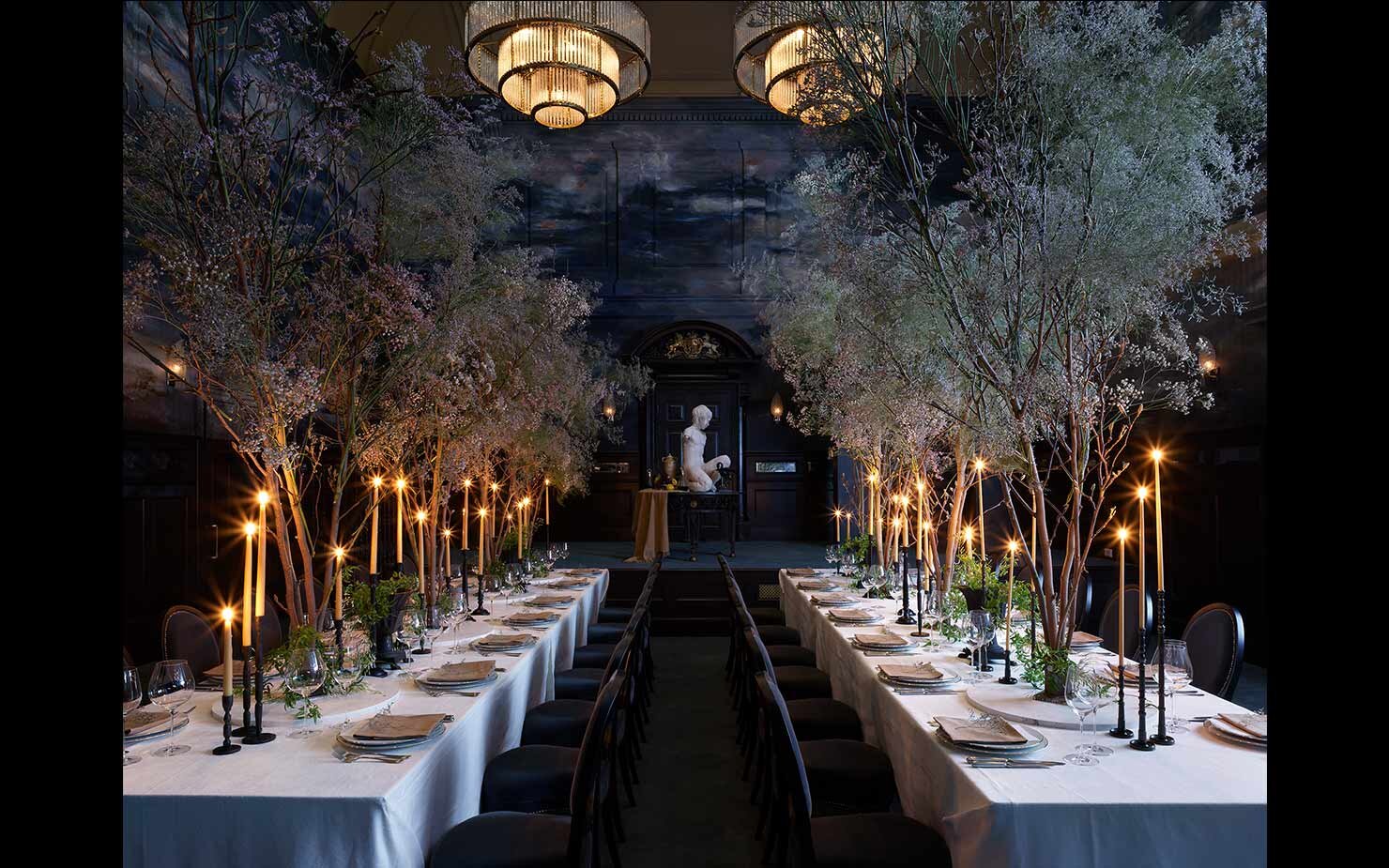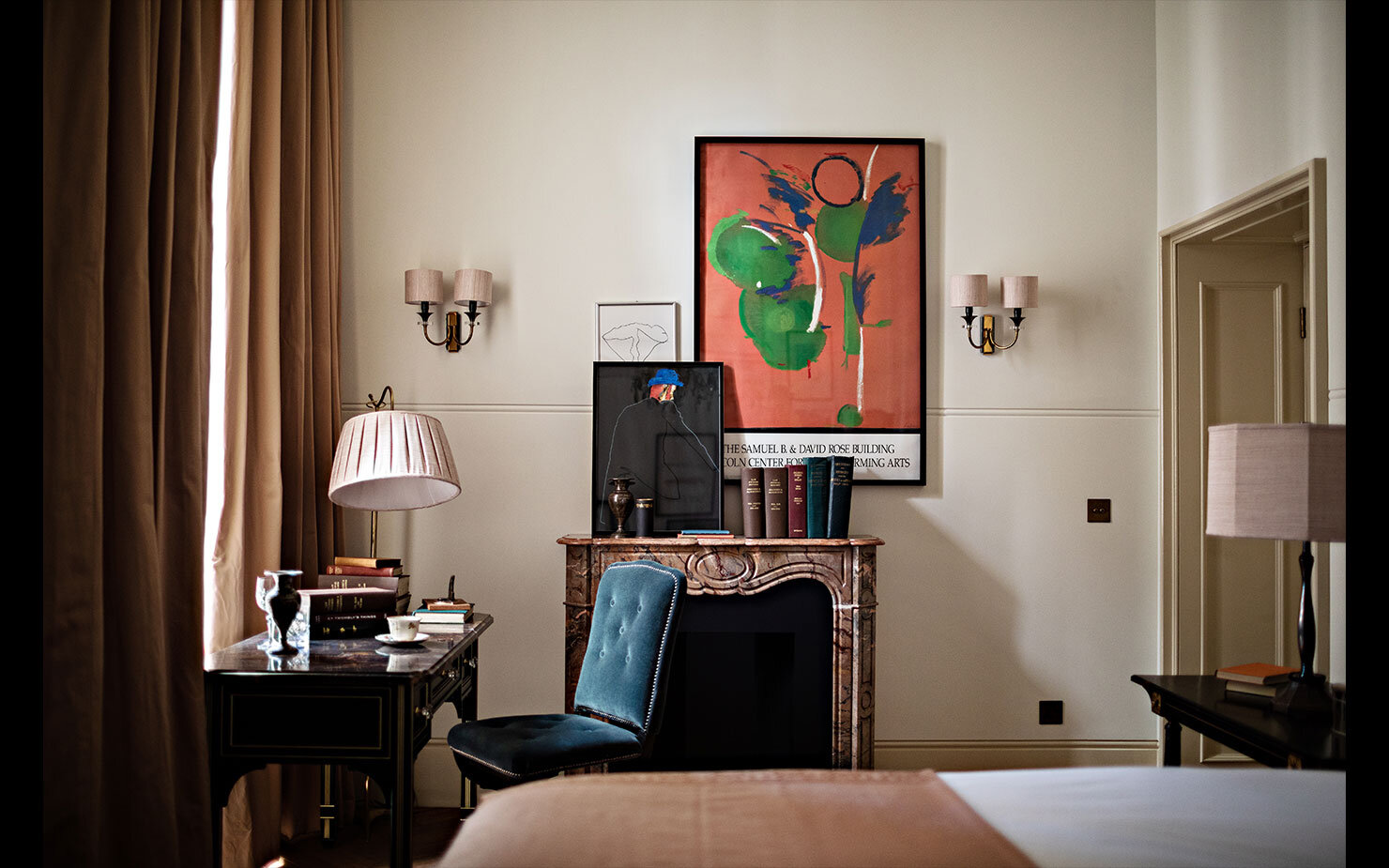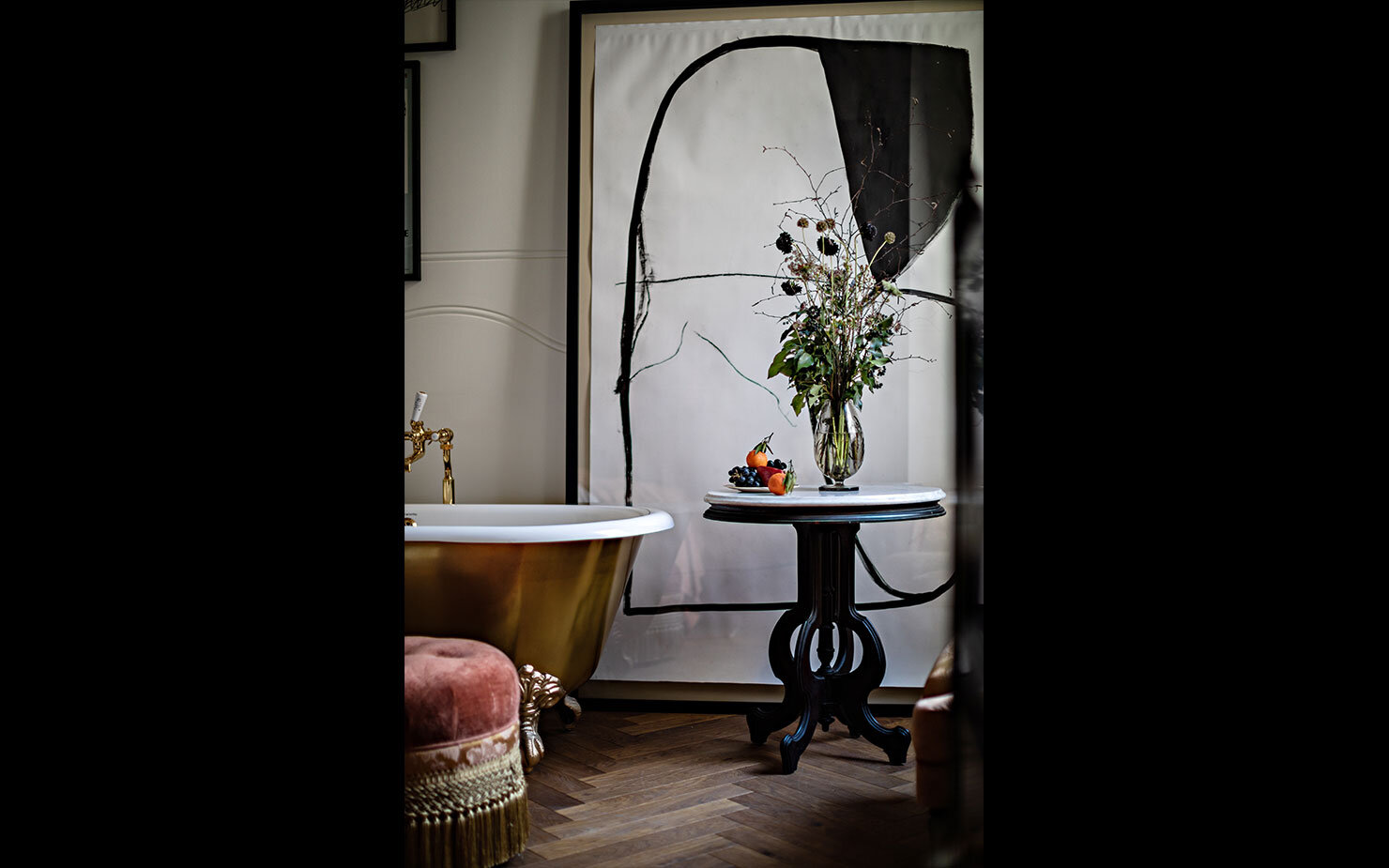Guests arrive through the grand port cochere, now elevated to introduce the transportative experience awaiting. A dynamic mix of dining and cocktail venues awaits, the first of which might be the Library. The two-story space is evocative of this Nomad hallmark at other locations, with sumptuous millwork setting the serious, but playful, tone. The Elephant Bar embraces again the well-traveled essence of the Nomad, with the familiar and unexpected flourishes of chartreuse and ebonized wood. The Magistrates Court is a bold re-imaging of this once very serious room, with a dreamscape quite literally taking over the architecture to serve as backdrop for functions and events. The pre-existing coal vaults find new life as lounges and discovered haunts. Custom lighting and furniture all designed by Roman and Williams accentuate the spaces. And with perhaps the most dramatic interjection is the three-story Atrium, built anew by enclosing the former courtyard with a glass ceiling and steel structure. A new wing of the building meets the historic at this point, and the Atrium exists as a certain nexus point of the hotel. The formal meets the informal, the tamed meets the wild. At the Nomad London, old and new find themselves again in embrace, connected and liberated.
Set to open at the end of 2020, the Nomad Hotel has set its sights on London – and in Covent Garden and the imposing Bow Street Magistrates Court no less. A nineteenth-century building having served originally as a police station and court bears with it a certain tension of toughness and intensity, as it is re-envisioned as a 91-room luxury hotel and home for the free-spirited. With the Nomad Hotel itself drawing its origins in New York, it is a fitting combination then that Roman and Williams helms the rebirth of the building and the establishment of the brand's presence in London - with all previous Nomad Hotels having been designed by Jacques Garcia. The opening of the the hotel comes on the heels of Roman and Williams' most recent opening, of the British Galleries at the Metropolitan Museum of Art, again binding this decidedly American ethos with the rich history of decorative arts and exchange across the history of the United Kingdom. Grounded by this narrative, and an ethos rooted in creating voltage by uniting complementary forces – the masculine character of the historic architecture is animated with interjections of femininity, of glamour, and of a cosmopolitan spirit.




